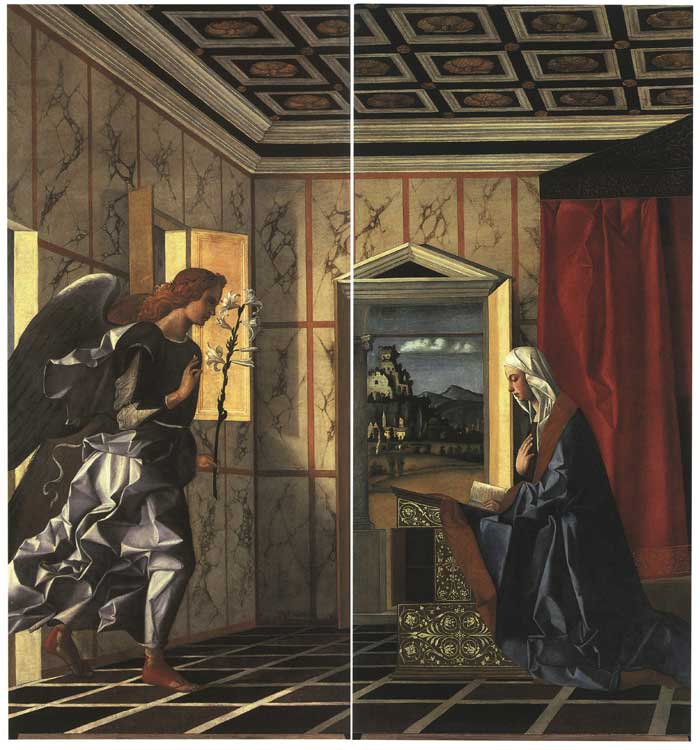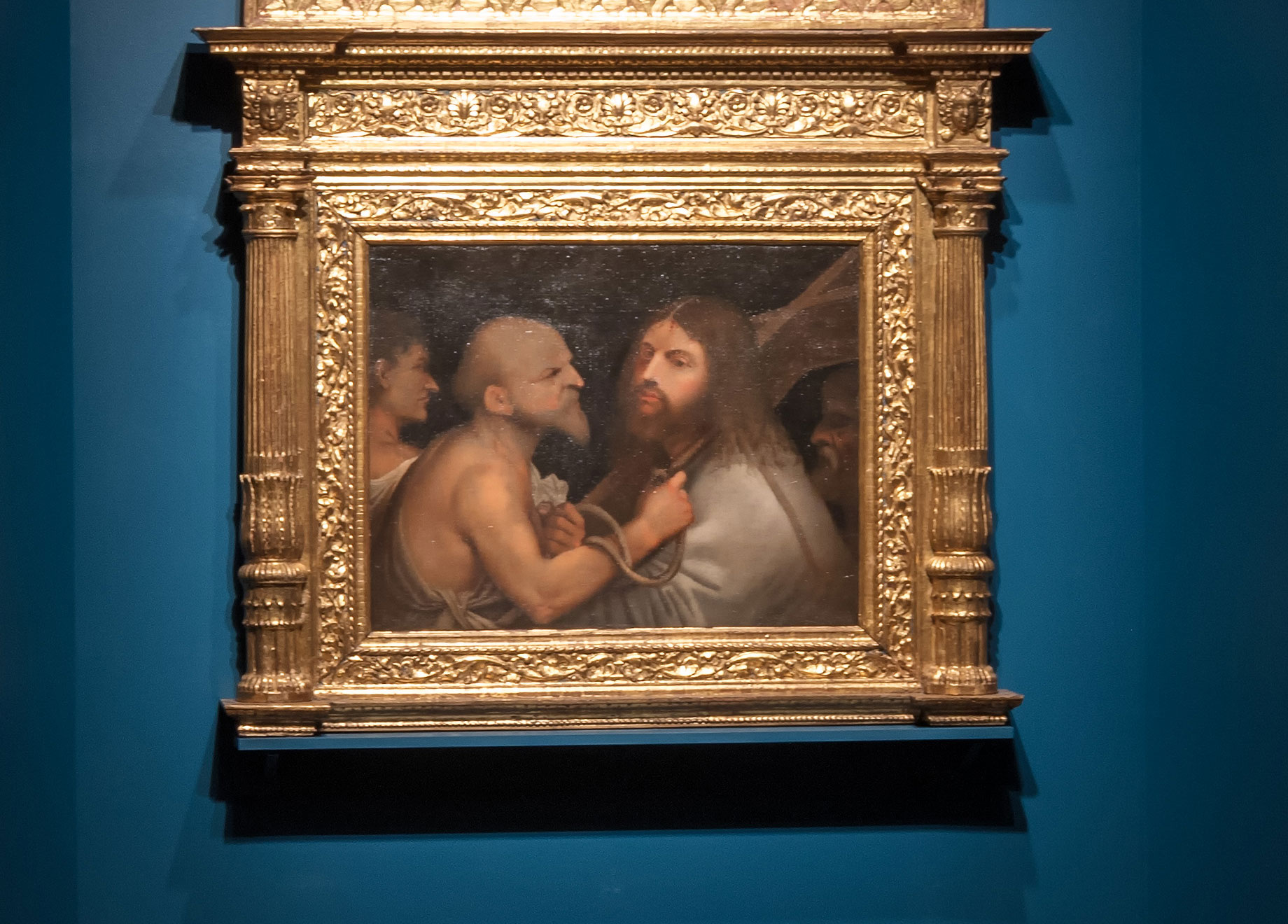Glory of Venice: Masterworks of the Renaissance closes February 12, 2017. Don't miss this chance to see more than 50 paintings, including works from Italy's Gallerie dell’Accademia, which houses one of the greatest collections of Venetian Renaissance art in the world.
In the video above, Angelica Daneo, curator of painting and sculpture, discusses how a Tuscan poetess thought Vittore Carpaccio's portrait brought her to life. Following are just a few other intriguing stories about the artworks in the exhibition including a painting that was once thought to have miraculous powers:

Giovanni Bellini, Annunciation, early 1500. Oil on canvas; 88 × 42 in., each. Gallerie dell’Accademia, Venice. Image Photographic Archive, Polo museale del Veneto, granted by the Ministry of Cultural Heritage and Activities and Tourism; reproduction prohibited. Cameraphoto Arte, Venice / Art Resource, NY.
Annunciation
This magnificent work is made up of two panels that functioned as organ shutters, originally from the Church of Santa Maria dei Miracoli in Venice. This is the artist’s only domestic interior, and shows Bellini’s knowledge of scientific perspective. Looking closely, visitors will notice the parallel lines of the floor shift from left to right, which is one of the clues that Bellini painted this in anticipation of visitors entering the church from the left.
Christ Carrying the Cross
Scholars are divided as to whether Titian or Giorgione painted this canvas, which was believed to have miraculous powers. Those seeking blessings and healing would touch the painting when it was hung in the Scuola Grande Archiconfraternita di San Rocco in Venice. Visitors can see the accumulated effects of this in the pigment loss on the head and face of the figure on the left of Christ.
Portrait of a Man in Armor
When this work was cleaned in 1982, the head of a page was surprisingly revealed in the background on the left side of the painting. Originally laid with dark underpaint and then covered over in the green of the background, it’s unknown why the artist decided to change his composition. In the right light, visitors can see the traces of the page’s face looking up at the main subject.


